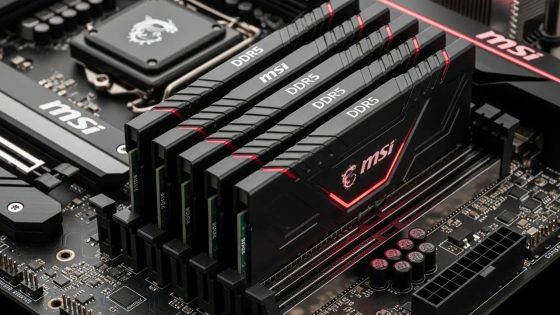MSI Announces DDR5 System Memory Revolution

MSI is pushing the boundaries of desktop memory with the introduction of 128GB DDR5 CUDIMM modules based on a quad-row layout. This design doubles the number of chips compared to a conventional dual-row module, enabling 128GB per DIMM at 5600 MT/s. The key innovation: even systems with only two DIMM slots, like many Mini-ITX boards, can now reach 256GB without having to rely on workstations. Until now, such capacities have been limited to Xeon or Threadripper platforms, so the arrival in the consumer segment is a significant shift.
MSI has conducted validation on its Z890 motherboards for the Intel Core Ultra 200 series. Quad-rank memory stability on conventional boards is not easy, as it puts a strain on the controller and requires fine-tuning of signal integrity. The certification ensures that the modules can withstand high loads without performance drops or training issues, taking the guesswork out of system builders with lots of memory.
Professionals, not gamers, will benefit the most from the 128GB modules. Workloads such as video production, large-scale 3D rendering, engineering simulations, and AI development require massive amounts of memory. As local AI models grow and users experiment with larger context windows, RAM becomes a major bottleneck. The ability to fit 256GB into a compact system opens the door to workstations that are smaller and less expensive than professional solutions.
Pricing remains unknown. ADATA has not yet disclosed costs, while DRAM prices are already high due to demand in the AI sector and limited DDR5 production. High-capacity modules are typically produced in small quantities, which can further increase the price.
However, this step represents a significant shift towards more flexible desktop configurations. Support for 256GB of system memory on mainstream platforms makes high-memory systems more accessible to independent creators, researchers, and smaller studios. If other manufacturers follow MSI’s lead, availability and compatibility will improve even further.





























